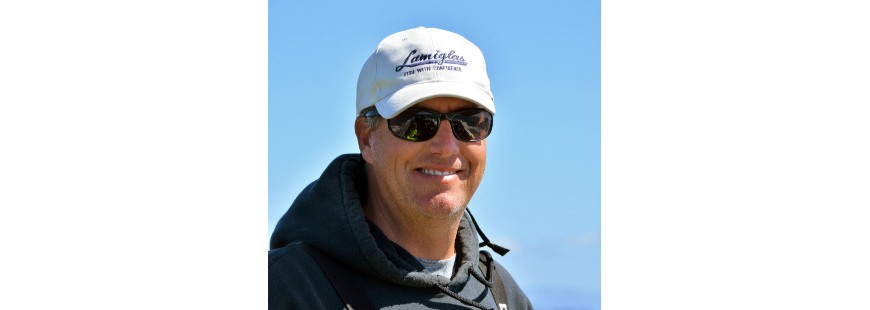As I read yet another article about communities coming together in “collaboration” to ensure the future of salmon and sportfishing, I let out another yawn. Same subject, different day. Of course everyone wants to save salmon and ensure abundant numbers for future generations. I’m no better, however, bringing attention to what everyone already knows: the future of our natural resources is bleak and without drastic changes in the way we live our lives, our children will never get to experience what we have and certainly what our grandparents had.
How about these keywords we read in every recovery opinion piece these days: “ensure for future generations,” “alter the way we live,” “precautionary approach,” and “come together as a salmon nation and work together.” It’s so easy to talk about and take the baby steps, but what it comes down to, no matter how many volunteer hours your fish conservation non-profit contributes to salmon recovery, is necessary regulatory action and funded enforcement to force change. If you’re like me, you hate regulation, you hate being told what to do, and regulation is fine, if it doesn’t affect you. I may be one of the most conservation-minded consumptive fisherman in my region, but I will take whatever is legal to take, as long as I am going to utilize my catch. I tagged 55 salmon in 2014, not a one of them remained in my freezer past New Year’s Eve.
There have been conferences, symposiums and panels, sure, and even some “blue ribbon” panels giving policy-makers all the ideas they need to solve the problems. Well, the science is in, but the policies aren’t. Maybe one of the greatest pieces of collective work done around salmon recovery was a collaboration by 36 scientists back in 2006 that went by the name “Salmon 2100, The Future of Wild Pacific Salmon.” It was all the rage back in 2006. I haven’t taken the time to understand what policies from this brilliant piece of work, if any, have been adopted. I’d be willing to bet…
Likely one of the biggest, and dare I say, heavy-handed, pieces of regulatory actions in our nation’s history is the Magnuson-Stevens Act (MSA). The Magnuson-Stevens Act has gone through two major revisions since its adoption in 1976 and most would agree, at least those that tend to err on the side of conservation rather than extraction, the last revision in 2006 set our nation’s management of marine resources on the right track. Legislation such as the MSA is huge and should go through periodic review and revision as our knowledge grows and our needs evolve.
But, if there’s one thing we have learned over time, it’s that conservation now, pays dividends later. We’re on a strong path to recovery from where we were in the 1980’s and 90’s. I was an Oregon port salmon sampler and a Bering Sea observer at that time; this was a time of dramatic overhaul for the Pacific Northwest fleet. We were in the midst of a major federal buy-out of the commercial trawl fleet, and the smaller Oregon fleet was headed north to the Gulf of Alaska and Bering Sea (the new frontier) to make their slimy gold and feed their Oregon families once again.
Well, we continue to be inundated with challenges, and my biggest fear, ironically, came when I was touring a restoration site on a small north Oregon coast river called the Necanicum. A wetlands restoration consultant and friend of mine, Doug Ray, beautifully crafted a complete ecosystem restoration site that first opened my eyes to what it really meant to embrace ecosystem-based management (EBM). This was NOT a coho restoration site, the landowner just wanted to hear the frogs in her backyard again. It just happened to have great benefits for coho populations in the basin.
One of the reasons the MSA has been so effective in recovering several stocks of rockfish and other species, is their relatively small home ranges. Consequently, it’s one of the reasons why restoring salmon populations has been so difficult. When a species is born in the Salmon River in Idaho, migrates through an array of hydropower projects on the mainstem Columbia, past the foraging seals, terns, cormorants, glaucous-winged gulls and murres, the troll fleet in SE Alaska, sea lions and sportfishers in the ocean and lower Columbia and back upstream past those same hydropower facilities, how can we expect any of them to live?
If you subscribe to the Salmon 2100 scientists, by the year 2100, the lower Pacific Coast states will be reduced to remnant runs of wild salmon. (Aren’t we already there?) In the words of the Salmon 2100 publication, “Most authors conclude that major, sometimes wholesale modification of core societal values and priorities will have to occur if significant, sustainable populations of wild salmon are to be present in the region through 2100.”
So, we need to move mountains if we want future generations to enjoy fishing wild salmon. MSA is again up for reauthorization, and it’s up to us as key stakeholders to ensure this Congress doesn’t mess with success and maintains a vision for a future of wild, healthy salmon runs.


